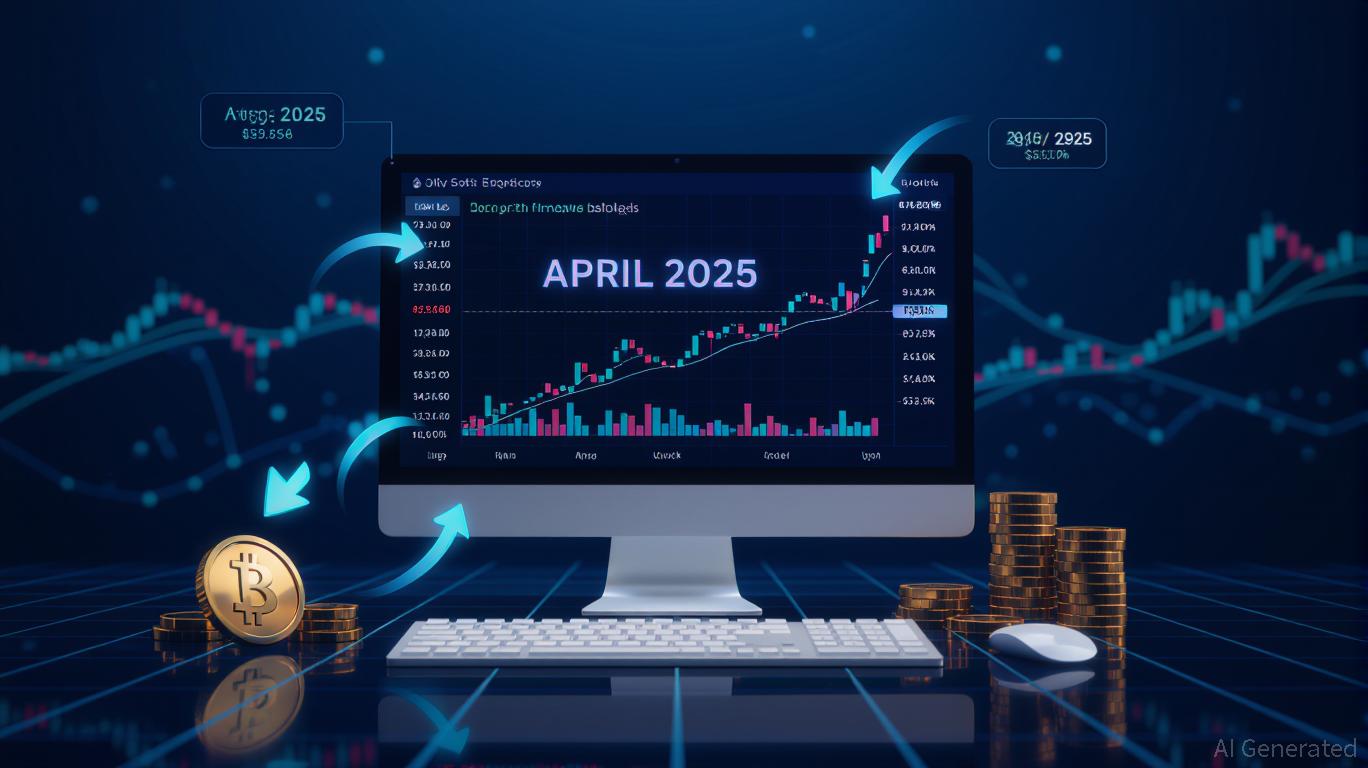In the ever-shifting landscape of cryptocurrency, few assets have embodied the whims of retail investor behavior as vividly as PEPE, the frog-themed memecoin. Over the past year, PEPE has oscillated between euphoric surges and brutal corrections, serving as both a mirror and a magnifier of market sentiment. For investors seeking to navigate the volatile world of memecoins, understanding the interplay between on-chain withdrawal trends and retail psychology is no longer optional—it is essential.
The Whale Whisperers and the Retail Frenzy
The second quarter of 2025 offered a masterclass in how large-scale movements of PEPE tokens can act as a barometer for broader market dynamics. Whale accumulation, a term used to describe the strategic buildup of tokens by large holders, became a defining feature of Q2. By early May, wallets holding 10–100 trillion PEPE had increased their holdings by 24 trillion tokens since January—a 20% rise. This accumulation was not random; it was a calculated bet by sophisticated investors who saw value in PEPE’s rebound from a Q1 low of $0.0000096 to a mid-May peak of $0.000014.
One of the most telling moments came in April when a single whale withdrew 500 billion PEPE (worth $4.36 million) from Binance. This move, widely interpreted as a vote of confidence, coincided with a 40% single-day price surge. The withdrawal signaled reduced sell pressure and hinted at long-term positioning, which retail traders quickly picked up on. The result? A surge in spot and futures trading volume, with PEPE’s 24-hour volume hitting $1.4 billion in late April.
Conversely, Q1’s bearish correction was triggered by a whale dumping 262 billion PEPE ($2.12 million) in March. This event, while initially destabilizing, also revealed the resilience of the market. Other whales stepped in to absorb the dumped tokens, stabilizing the price and setting the stage for the Q2 rally. Such patterns underscore a critical insight: in memecoins, whale activity is not just a signal—it is often the catalyst.
On-Chain Metrics as a Retail Sentiment Indicator
The movement of tokens between exchanges and private wallets provides a real-time gauge of investor sentiment. By Q2, on-chain data showed a 2.4% drop in PEPE’s exchange reserves, indicating that large holders were increasingly moving their tokens to cold storage. This trend, often dubbed “accumulation,” reduced immediate liquidity and created conditions for short squeezes in derivatives markets. For example, when PEPE failed to break above $0.000014 in late May, the resulting 7% pullback was swiftly reversed as whale-held tokens began to re-enter the market.
Retail traders, meanwhile, have become adept at reading these signals. Platforms like Phemex and Binance have seen a surge in spot and futures trading as investors employ strategies such as range-bound trading and grid bots. The interplay between whale accumulation and retail FOMO (fear of missing out) has created a self-reinforcing cycle: whale withdrawals signal optimism, which drives retail buying, which in turn fuels further price appreciation.
However, this dynamic is a double-edged sword. By mid-July, PEPE’s trading volume had plummeted by 73% from its July 18 peak of $2.2 billion, and open interest in futures had dropped to $590 million. This decline reflected a cooling of speculative fervor, as macroeconomic pressures—such as U.S. tariff announcements and the Federal Reserve’s rate-cut expectations—began to weigh on risk assets.
The Q3 Shift: From Speculation to Strategy
As we enter Q3 2025, the narrative around PEPE is evolving. Whale dominance has fallen to a two-year low (43% of the circulating supply), shifting market control to retail investors. This has led to sharper price swings, as individual traders now drive much of the volume. Over 7 trillion PEPE tokens have moved off centralized exchanges, reducing sell pressure and potentially setting the stage for a short squeeze if the token breaks above $0.00001136.
Yet, the risks remain. A breakdown below $0.0000098 could trigger a cascade of liquidations, pushing the price toward $0.000007. Technical indicators like the TD Sequential and open interest trends suggest the market is in a period of adjustment. For instance, open interest in PEPE futures has dropped by 42% since late July, signaling a reduction in leveraged speculation. This shift could mean that future price movements will be more reflective of fundamental retail sentiment rather than speculative overleveraging.
Investment Implications and the Road Ahead
For investors, the key takeaway is clear: PEPE’s volatility is not a bug but a feature of its market structure. The coin’s price is inextricably linked to on-chain activity, social media sentiment, and macroeconomic conditions. Those who wish to participate in this space must do so with a keen eye on these interdependencies.
- Monitor Whale Activity: Platforms like Etherscan and Glassnode offer real-time insights into large holder movements. A sudden withdrawal from an exchange is often a bullish signal, while deposits may indicate impending sell-offs.
- Track On-Chain Metrics: Exchange reserves, wallet distribution, and active wallet growth are critical indicators. A drop in exchange-held supply, as seen in Q2, can signal reduced liquidity and potential price resilience.
- Balance Speculation with Caution: While PEPE’s meme-driven narrative can create explosive gains, its lack of real-world utility means long-term sustainability is uncertain. Investors should consider hedging with utility-based tokens like Remittix (RTX) or Dawgz AI, which offer tangible use cases.
Conclusion
PEPE’s journey in 2025 has been a case study in the power of retail capital and the fragility of meme-driven markets. As the coin navigates the transition from speculative frenzy to strategic accumulation, investors must remain agile. The on-chain data tells a story of resilience and reinvention, but it also serves as a reminder: in the world of memecoins, the only constant is volatility. For those willing to read the signals, the rewards can be substantial—but so can the risks.
